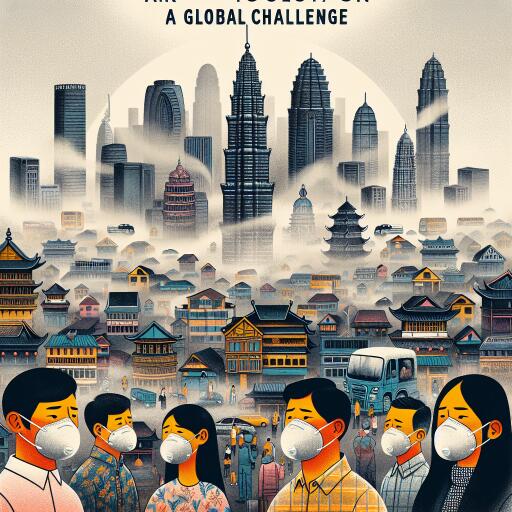
Asia Dominates List of Cities With Hazardous Air Quality, Global Report Reveals
In a groundbreaking analysis, it has been uncovered that the lion’s share of the world’s cities besieged by the most severe air pollution are located in Asia. This alarming trend underscores a dire global health risk affecting countless lives, with environmental degradation at its core.
The comprehensive study, conducted by a leading air quality monitoring network, poured over data from over 7,800 cities worldwide. Astonishingly, it found that nearly all cities languishing under the worst levels of air pollution were nestled within Asian territories. This revelation comes against the backdrop of rising concerns over the deteriorating quality of air on a global scale and its ensuing health implications.
Central to the report’s findings is the perilous particulate matter known as PM2.5. These microscopic pollutants, no larger than 2.5 micrometers in diameter, pose a significant health hazard due to their ability to penetrate deep into lung tissue and even enter the bloodstream. Emanating from various sources including the combustion of fossil fuels, industrial discharges, and natural phenomena such as dust storms and wildfires, PM2.5 is a formidable agent of respiratory and cardiovascular diseases, cancer, and could impair cognitive development in children.
Highlighting the profound scale of this crisis, the report pinpoints a city in India’s Bihar state as having the globe’s highest annual average concentration of PM2.5, alarmingly surpassing World Health Organization (WHO) guidelines by over twenty times. Yet, this is no isolated case. The narrative is grim across many parts of Central and South Asia, with leading nations grappling with air quality indices that starkly overshoot safe levels stipulated by health authorities.
The intersection of air pollution with climate challenges is impossible to overlook. The study sheds light on how the climate crisis, fueled by the unabated burning of fossil fuels, is intricately linked to air quality concerns. It exacerbates weather anomalies, thereby influencing pollutant dispersion, intensifies wildfire occurrences, and extends allergy-inducing pollen seasons. Consequently, addressing air quality is not only about safeguarding public health but is also intrinsically connected to broader climate action endeavors.
In an era marked by wildfires and changing agricultural practices, North America too has felt the impact, particularly with devastating fires in Canada altering regional air quality figures. Similar trends are observable in parts of Southeast Asia, ticking upwards in pollutant levels, underscoring the pervasive challenge of achieving clean air.
The report serves as a somber reminder of the inequality that persists in global air quality monitoring efforts. Regions such as Africa, South America, and the Middle East are notably underrepresented due to a lack of sufficient data, underscoring a glaring gap in our understanding of air quality on a larger scale.
Despite these challenges, there is a silver lining – growing awareness and civic engagement across various strata of society, including communities, non-governmental organizations, and the scientific community, are increasingly pressurizing governments and pushing the envelope on air quality monitoring and improvement efforts.
As the world grapples with these findings, it becomes clear that the road to cleaner, healthier air is fraught with obstacles. Yet, it is a journey imperative for the well-being of our planet and future generations. Encouragingly, the dialogue and collaborative quest for solutions continue to gain momentum, paving the way for hope amidst the haze.





Leave a Reply